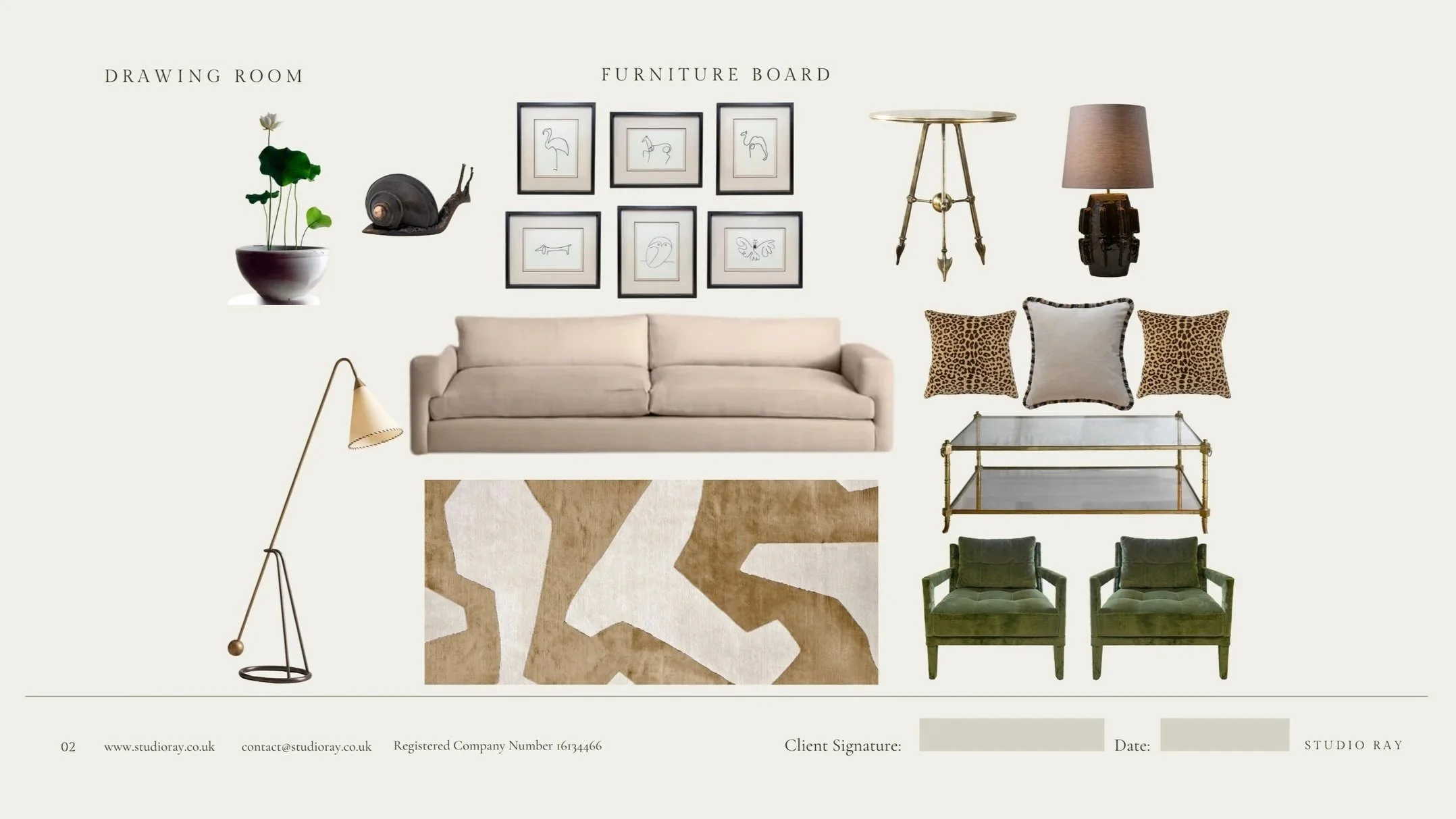FF&E Procurement Consultancy: Why More Clients Are Turning to Studio Ray
FF&E Procurement Consultancy: Why More Clients Are Turning to Studio Ray
A Service in Demand
You're juggling designs, deadlines, and a growing to-do list. You have the drawings and vision, but lack the time, human resources, or even the bandwidth to source, order, track, and coordinate every element: from lighting and furniture to artwork and accessories. This is where Studio Ray’s FF&E Procurement Consultancy service steps in.
It’s akin to having your own in-house procurement team…without the overheads. We bridge the gap between your design concept and a polished, fully resolved project. Whether you're an architect, developer, hotelier, landlord, or discerning homeowner, our specialist FF&E (furniture, fixtures and equipment) procurement support ensures you stay focused on what matters most to your business, while we handle the details.
Over the past few months, we’ve seen a surge of interest in our FF&E procurement consultancy, a clear sign that the message is resonating. It’s something we’ve long believed: procurement is the missing link between great design and a project that truly works in practice. At Studio Ray we work by your side, from the schematic design phase right through to post-occupancy support, ensuring every decision contributes to a coherent, functional, and beautifully executed interior.
What makes our approach different is that we don’t simply specify furniture and finishes from a distance. We guide our clients through the process, whether that’s trying out seating for comfort, considering durability for commercial and hospitality interiors, or balancing aesthetic appeal with day-to-day practicality. The result is not only a polished space, but one that truly supports the way people live, work, study, or welcome guests.
Who Benefits Most from FF&E Procurement Support?
At Studio Ray, we partner with a diverse range of professionals, including:
Architects and interior designers
Property developers and contractors
Hoteliers and hospitality groups
Landlords, letting agents, and Airbnb hosts
Discerning private clients
If you're leading a design or build project and need reliable support to procure and manage the finer details, our bespoke FF&E solutions make the process seamless.
Tailored Procurement Packages to Fit Your Project
We understand that every project varies, and so do your procurement needs. That’s why we offer three distinct service levels to align with your project's scope and complexity:
1. The Essential - Streamlined Procurement Support
Perfect for projects where the design is already locked in, this package includes:
Initial briefing
Product sourcing aligned with your specifications and budget
Access to trusted, trade-only furniture suppliers
Procurement list for your approval
Full ordering and supplier management
Basic delivery coordination
Ideal for architects, developers, and private clients who need efficient execution and professional support.
2. The Signature - Comprehensive Procurement Management
For projects requiring deeper coordination and oversight, this includes all the features of The Essential, plus:
Detailed delivery scheduling with couriers, contractors, and suppliers
Coordination of storage (when needed)
Quality and condition checks on arrival
Liaison with your site team to ensure smooth installation timing
Ideal for commercial or hospitality environments, multi-unit developments, or busy homeowners seeking seamless management.
3. The Bespoke - White-Glove FF&E Consultancy
Our most comprehensive, turnkey service. This includes everything in The Signature, plus:
On-site installation supervision
Styling and placement of FF&E
Art hanging and accessory layout
Final detailing and snagging walkthrough
Perfect for high-end residential spaces, boutique hospitality environments, or turnkey commercial projects where every detail must be flawless.
The Studio Ray Advantage: What Sets Our Procurement Apart
Here’s how our FF&E Consultancy elevates your project:
Save Time and Reduce Stress - we handle sourcing, ordering, and logistics.
Access Exclusive Trade-Only Suppliers - bringing in unique, bespoke pieces.
Ensure Quality and Reduce Risk - order tracking and condition checks safeguard your investment.
Seamless Project Coordination - working with your contractors and site teams.
Professional, Polished Results - from delivery to styling, nothing is overlooked.
Why FF&E Procurement Matters More Than Ever
Reduce Overwhelm & Gain Confidence
Managing procurement across multiple suppliers, schedules, and requirements can be daunting. With Studio Ray, you regain clarity and control even when juggling numerous projects.
Ensure a Seamless, High-Quality Outcome
From order tracking to final styling and art placement, we manage each step meticulously. The result? A polished, cohesive interior without the headache.
Deliver Projects on Time and with Style
We save you time and stress while ensuring your project looks thoughtful, intentional, and well-executed at every level.
If you're ready to reclaim your time, protect your project, and elevate the final look, Studio Ray’s FF&E Procurement Consultancy is here to help. With tailored packages, expert execution, and white-glove service options, we meet you wherever you are in your process.
Get in touch with the team at Studio Ray Interior Design: contact@studioray.co.uk to discuss how we can support your project, your timeline, and your vision.



